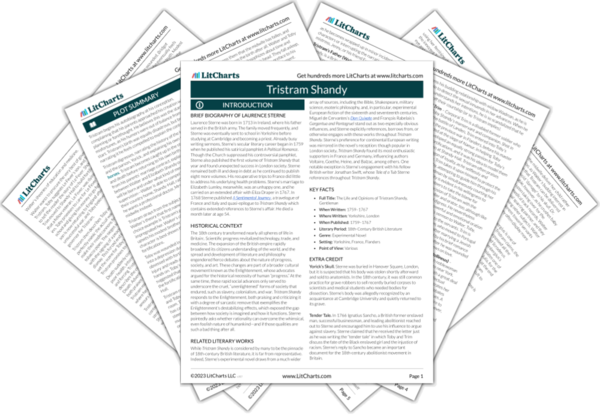The abbess’s argument is based on an elaborate, twisted logic that treats sins like units of measurement. Most theologians would certainly reject such logic, and Tristram uses it to poke fun at the hypocrisies of the Catholic church. The two words, “bouger” and “foutre,” mean “to move” or, more indecently, “to bugger” (that is, to have anal sex) and “to fuck.”
